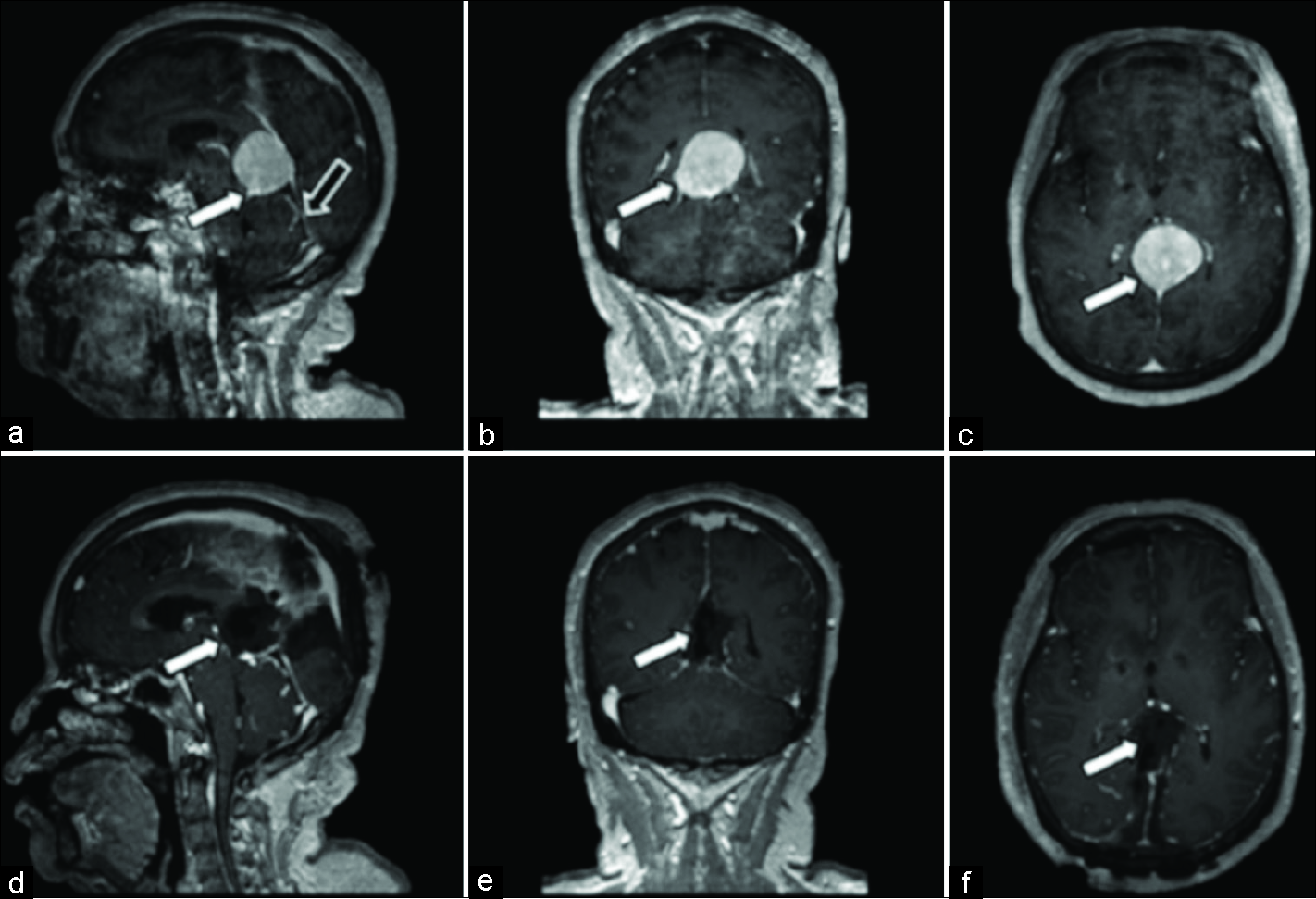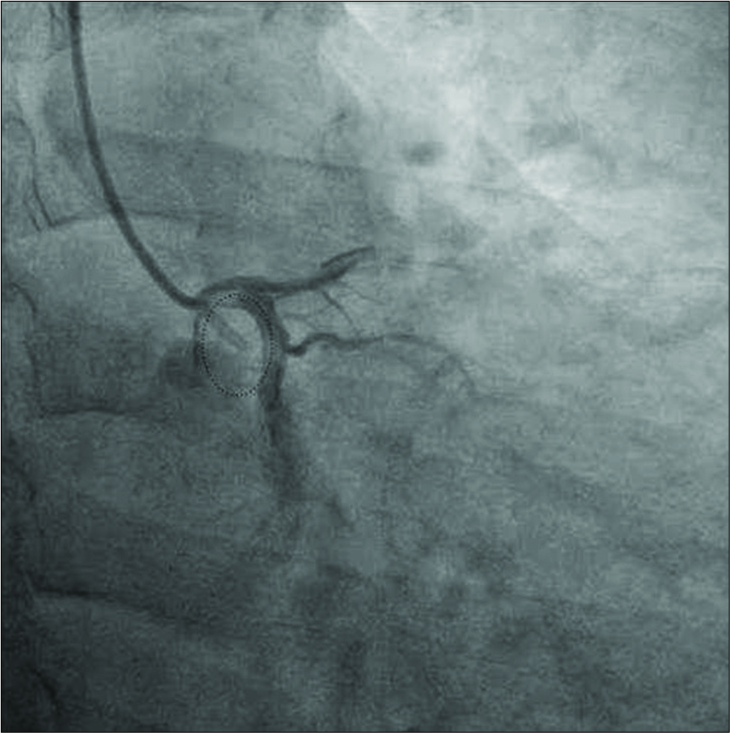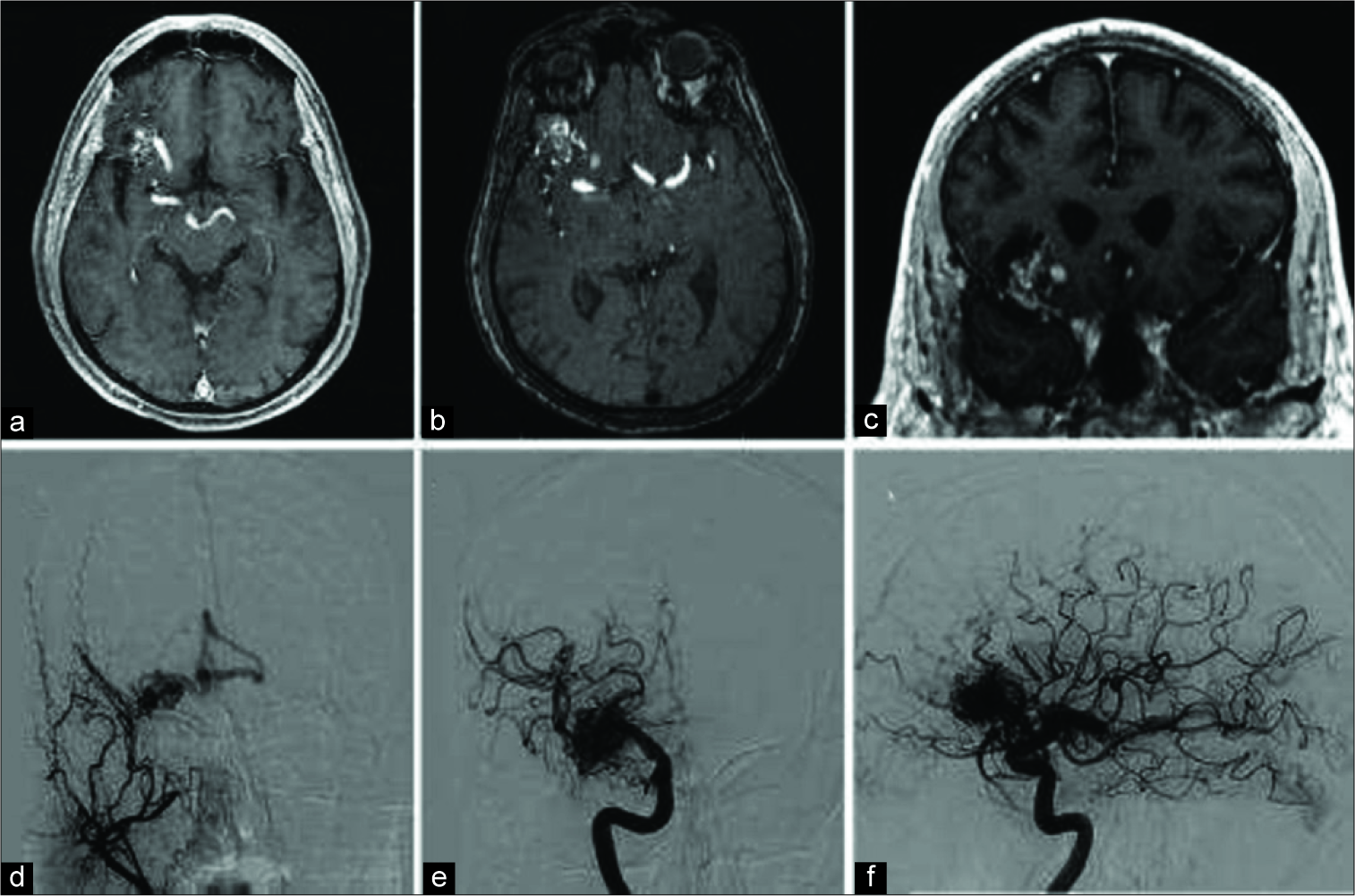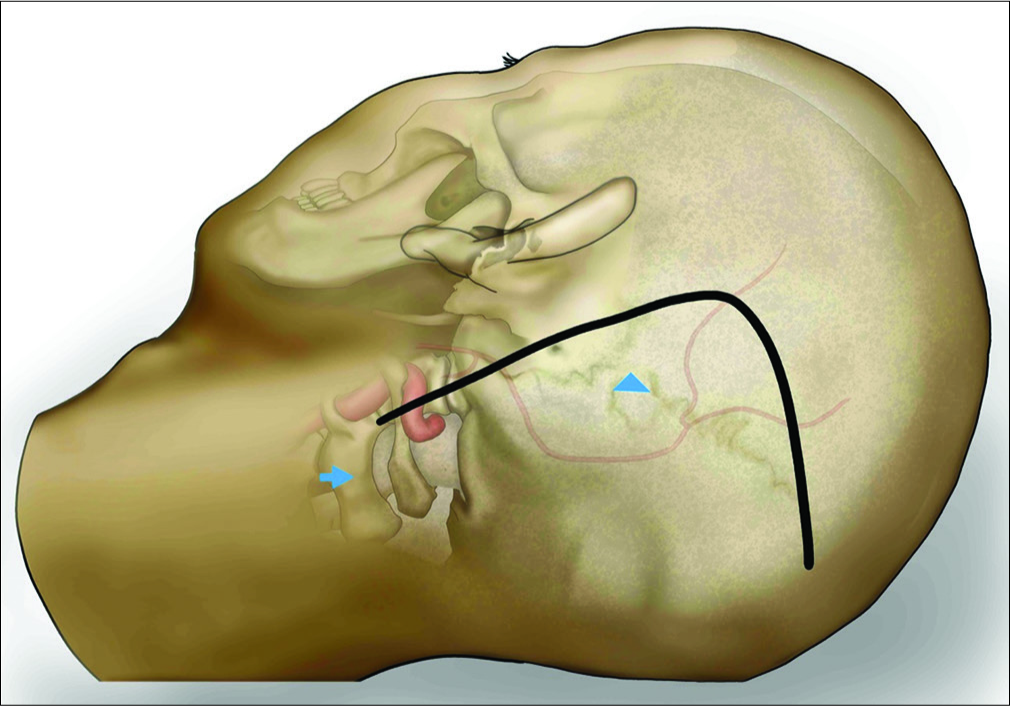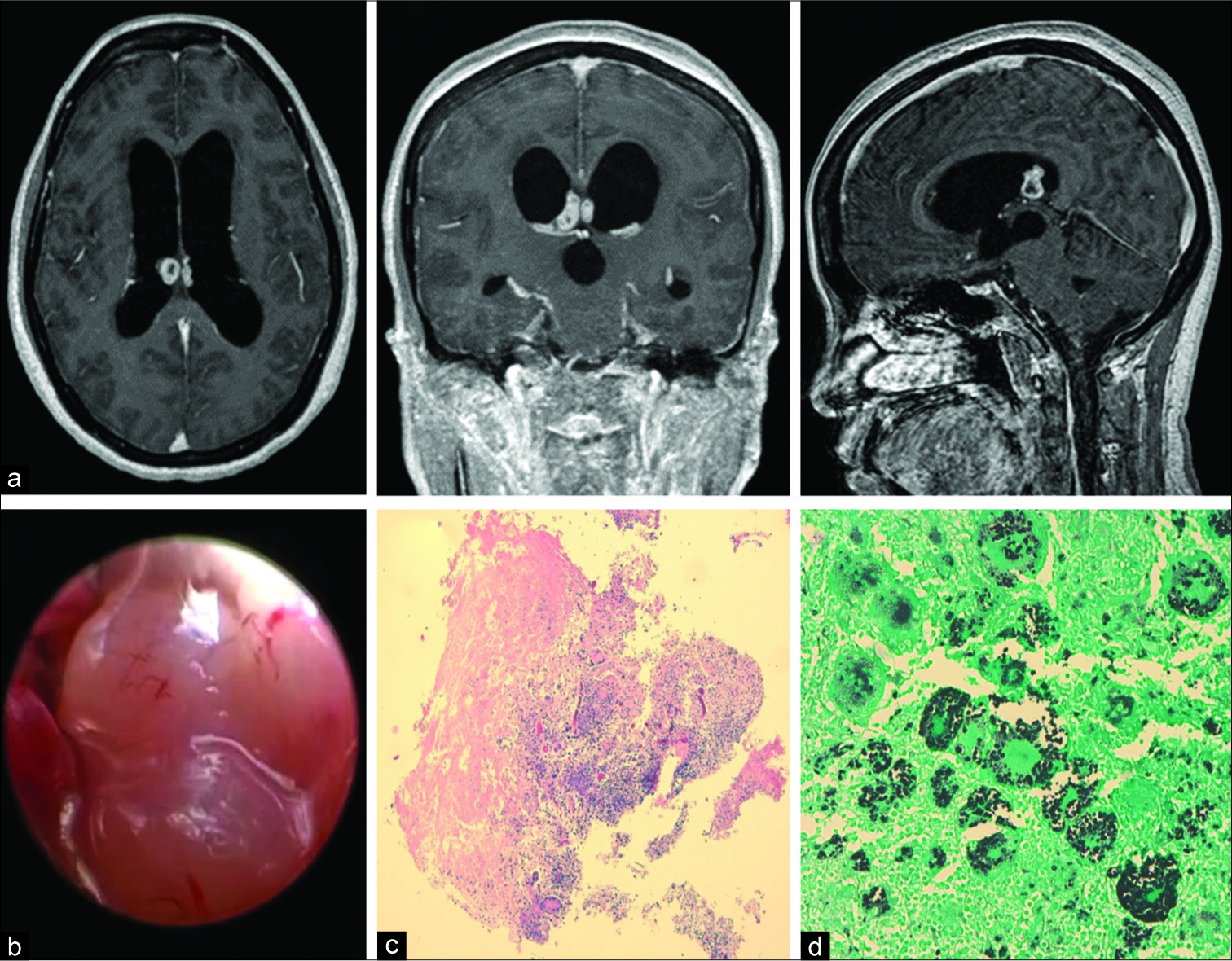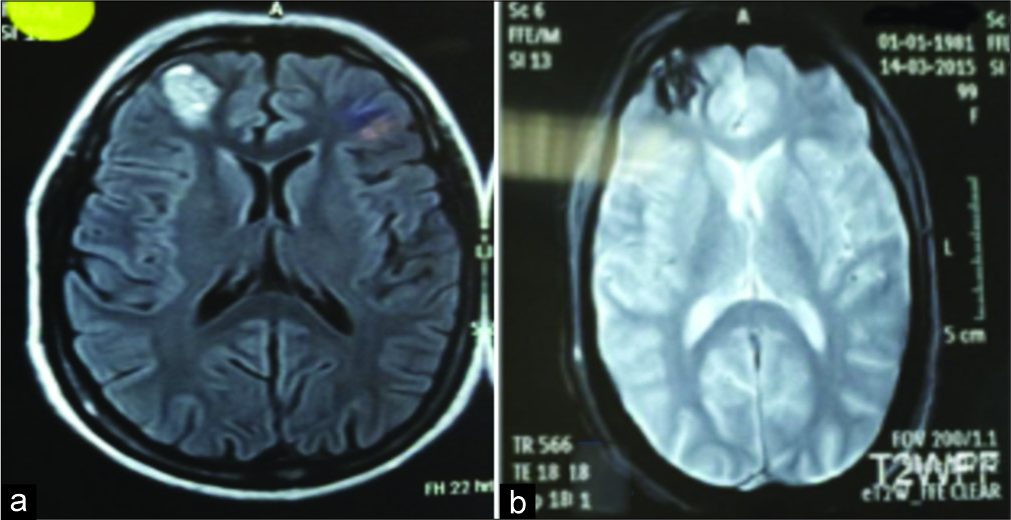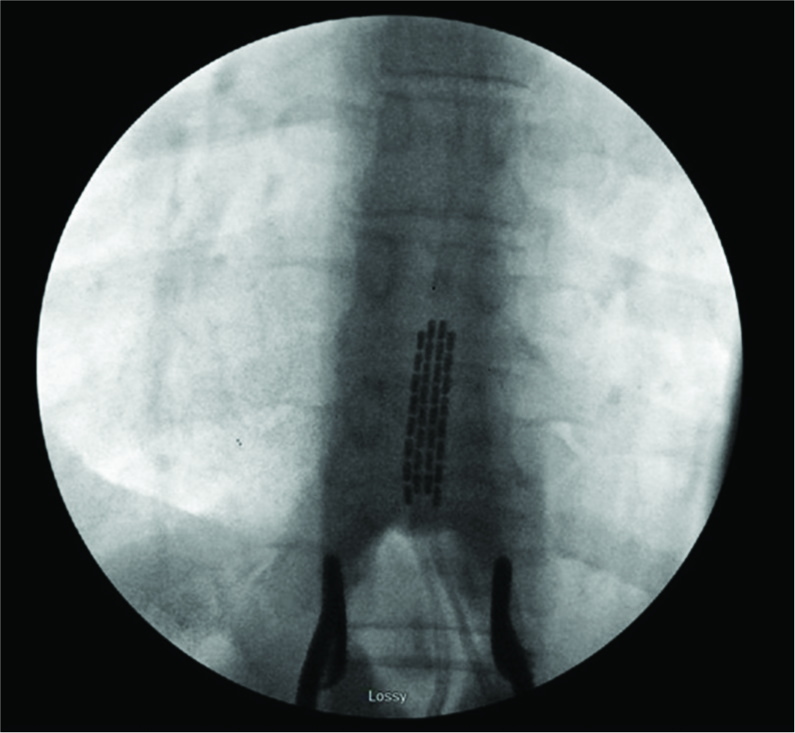Retractorless interhemispheric transtentorial approach for large lesions in the posterior incisural space
Date of publication: 28-Jun-2019
Background: Surgical resection of lesions in the posterior incisural space presents a significant surgical challenge, which may result in postoperative visual complications and other neurological deficits. We, therefore, describe a retractorless interhemispheric transtentorial approach that avoids surrounding brain structures with positive outcomes and no complications or visual damage.
Catheter fragment retrieved from an arterial branch of the right middle cerebral artery
Date of publication: 28-Jun-2019
Background: Cerebral emboli is a rare complication of endovascular procedures and foreign bodies in the cerebrovascular system can lead to stroke. When an intravascular foreign body is identified, endovascular retrieval should be attempted due to its high success rate and minimal morbidity.
Oculomotor neuropathy from an unruptured arteriovenous malformation in the frontal operculum: A case report
Date of publication: 28-Jun-2019
Background: Cerebral arteriovenous malformations (AVMs) are vascular lesions with a network of dysplastic vessels between an arterial and a venous tree with no intervening capillary bed. They most commonly present with an acute hemorrhage, seizures, or persistent headaches.
Surgical microanatomy of the occipital artery for suboccipital muscle dissection and intracranial artery reconstruction
Date of publication: 28-Jun-2019
Background: The occipital artery (OA) is an important donor artery for posterior fossa revascularization. Harvesting the OA is difficult in comparison to the superficial temporal artery because the OA runs between suboccipital muscles. Anatomical knowledge of the suboccipital muscles and OA is essential for harvesting the OA during elevation of the splenius capitis muscle (SPL) for reconstruction of the posterior inferior cerebellar artery. We analyzed the running pattern of the OA and its anatomic variations using preoperative and intraoperative findings.
Based upon 7.2% of the Eligible Voting Members, the American Association of Neurological Surgeons (AANS) Suspended Dr. Nancy E. Epstein for Arguing Against Unnecessarily Extensive Spine Surgery
Date of publication: 28-Jun-2019
Vein of Galen arteriovenous malformation: Unedited microneurosurgery
Date of publication: 25-Jun-2019
Background: Vein of Galen arteriovenous malformations (VGAVMs) are vascular malformations of the pineal region between a persistent embryological median prosencephalic vein of Markowski and the arterial choroidal system by a direct (mural type) or indirect (choroidal type) communication. Angiographic evaluation of VGAVMs usually describes a limbic arch between the anterior and posterior cerebral arteries throughout a pericallosal artery, and the classic “ε” shape configuration of the thalamostriate veins drainage into a subtemporal or a lateral mesencephalic vein due to the underdevelopment of the straight sinus, sigmoid sinus, and jugular bulbs. Moreover, falcine dural channels join the pouch of the malformation with the posterior third of the superior sagittal sinus and less frequently with the cavernous sinus, inferior petrosal sinus, and facial veins. At present, endovascular therapy is the standard management for these lesions. However, under failure of endovascular procedures such in this case, microsurgical management of VGAVMs under an experienced neurosurgical team might be paramount.
Why Would Two Patients with No Disease Be Offered Unnecessary Transforaminal Lumbar Interbody Fusions (TLIF)?
Date of publication: 25-Jun-2019
Intraventricular cryptococcoma mimicking a neoplastic lesion in an immunocompetent patient with hydrocephalus: A case report
Date of publication: 25-Jun-2019
Background: The aim of this study is to highlight the importance of cryptococcosis as one of the most common fungal infections of the central nervous system, stressing the consideration of a cryptococcoma within the list of differential diagnosis of intraventricular masses in immunocompetent hosts.
Supratentorial cavernoma and epilepsy: Experience with 23 cases and literature review
Date of publication: 25-Jun-2019
Background: The current study aimed to assess the role of microsurgical treatment of patients with supratentorial cavernoma with epilepsy based on analysis of our patients.
Spinal cord stimulator failure: Migration of a thoracic epidural paddle to the cervical spine
Date of publication: 25-Jun-2019
Background: Spinal cord stimulators successfully treat a number of pain syndromes but carry a risk of hardware complications. Here, we present a case of cranial migration of a thoracic epidural paddle to the cervical spine.


